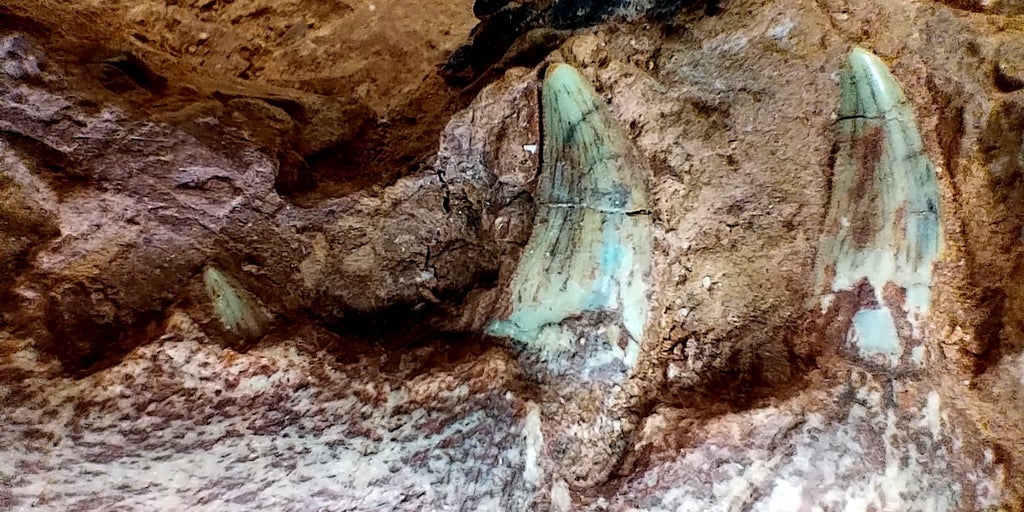Dinosaur fossils discovered after heavy rains in Brazil
Erosion caused by heavy rains,
Erosion caused by heavy rainfall in parts of Brazil earlier this year has uncovered the “near-complete” skeleton of a dinosaur that lived during the Triassic Period, around 233 million years ago, according to the Federal University of Santa Maria.
The dinosaur is thought to have been a carnivore and was about 2.5 metres (8 feet 2 inches) long, said Rodrigo Temp Muller, a paleontologist at the University of Florida’s McCain Campus who led the team that discovered the fossil.
Muller noted that the dinosaur was probably bipedal and had a free hand — for reference, it resembled a smaller version of an Allosaurus.
‘Extremely rare’ Jurassic fossil discovered in southern Utah
Muller added that the dinosaur belonged to a group called herrerasauridae, which included the first carnivorous dinosaurs. The fossil is the second-most complete herrerasaurid specimen ever found, according to UFSM.
An example of an Allosaurus species. (NPS/Bob Walters, Tess Kissinger/FOX Weather)
In fact, the dinosaur that Muller and his team discovered predates perhaps the best-known carnivorous dinosaur, Tyrannosaurus rex, by at least 150 million years.
Where dinosaurs appear depending on the weather
The discovery was made in late May in São João do Polesine, in the state of Rio Grande do Sul, on the southern tip of Brazil.
Dinosaur fossil. (CAPPA/UFSM / FOX Weather)
Muller said the site has been excavated by paleontologists for about 20 years, with weather contributing in part to the fossil discovery.
“Rain in this region regularly exposes the fossils,” he told FOX Weather, noting that the fossils are encased in sedimentary rock that is easily eroded.
“However, the recent rains have accelerated the erosion process,” he added.
Erosion of the excavation site. (Rodrigo Temp Muller / Janaina Brand Dillman / CAPPA – UFSM via Storyful / FOX Weather)
Heavy rains hit the Rio Grande do Sul region in early May, Historic floodAs a result, more than 500,000 people were forced to evacuate and over 100 people died.
The UFSM noted that while excessive rain could accelerate erosion at the fossil site, it could also destroy the fossils if they are not rescued in time: Newly exposed fossils, especially small ones, are vulnerable to wind and rain and can be destroyed in a single rain shower.
Now, Muller and his team will finish preparing the recently rain-discovered fossil, which includes removing the bones from the rock to examine the specimen’s anatomical details, which will help determine whether it’s a new species of dinosaur.


